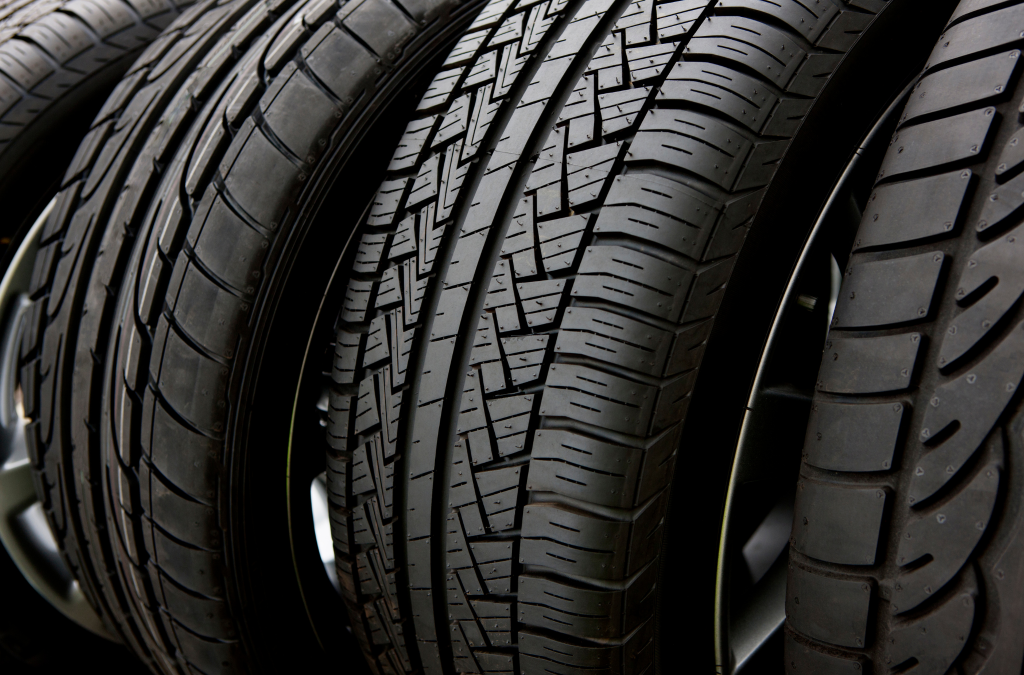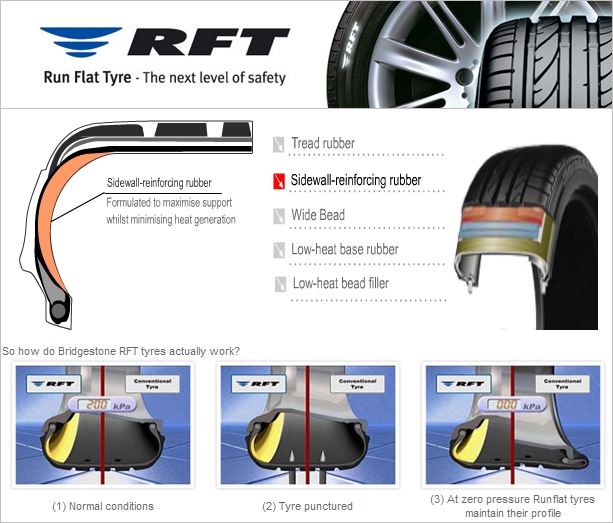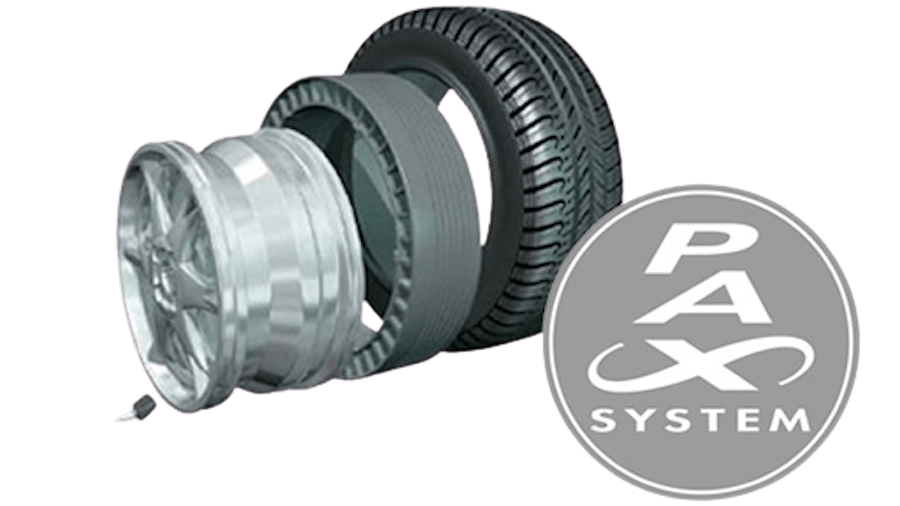Can Run Flat Tyres Be Repaired?
It’s Friday evening, you’ve had a rough day at work, and nothing is going your way, but just when you thought things couldn’t possibly get worse poof, you get a flat tyre.
So what do you do? Well, you can roll up your sleeves, get your hands dirty and change the tyre yourself, or you call roadside assistance and wait.
But do you really want to wait an hour on the side of the road in peak hour traffic for a tyre change?
Obviously not right?
Well, most major tyre companies would agree. In fact, it’s one of the reasons run-flat tyres have been rising in popularity since the ’80s.
In case you’re not up to speed, run-flat tyres are tyres that can still be driven on for short a short period, even at zero psi. They’re designed to not only be safe during blowouts but also to get you to your nearest tyre garage.
Sounds great right?
Well, they aren’t without their drawbacks. They can be costly, difficult to replace, decrease ride comfort, and almost nobody wants to repair them.
Along with that, when you ask around, it seems tyre shops are reluctant to repair a punctured run flat.
Which begs the question, why? Can you really not repair a run flat tyre?
Keep reading to find out.
What Are Run Flat Tyres?

Run-flat tyres, also known as self-supporting tyres (SSTs) have a unique reinforced sidewall construction. This means they can perform like normal for a limited distance and speed in the event of a flat or partially deflated tyre.
The design of SSTs allows you to continue driving until you reach a safe location where your tyres can be repaired or replaced.
If you do get a flat, manufacturers advise driving no faster than 50mph (80kph) on a completely flat 0psi tyre.
For your safety, it’s recommended to only drive on a 0psi tyre for a maximum distance of 50 miles (80km).
Of course, this depends on the specifications of the brand of tyre, vehicle weight, road conditions, and the severity of your puncture.
You can check the manufacturer’s recommendations in your car’s manual if you are unsure of your tyre specifications.
Advantages Of Driving On Flats
The main advantage of SST’s is, you can continue driving without having to change the tyre immediately or have the car towed if you have a flat tyre.
Better Stability After A Puncture
Should you experience a sudden loss of air or a flat tyre, it’s less likely that the weight of your vehicle will suddenly shift and could cause you to lose control of your vehicle.
Lower Vehicle Weight
Vehicles equipped with SST’s typically don’t carry a spare tyre or tyre repair tools.
This reduces the weight of your vehicle and helps improve fuel economy and space, albeit marginally.
Disadvantages
Run flat tyres aren’t without their disadvantages. Below, are the main disadvantages of running an SST.
Tyre Blowouts Can Still Happen
If you ignore your car’s TPMS warnings and exceed the speed ratings beyond the suggested unpressurized limit, the tyre can start to disintegrate. This may cause your vehicle to become unstable and difficult to control.
Low Tyre Pressure Is Hard To Detect
The sidewalls of a flat tyre do not collapse when they lose air pressure. So it’s very difficult to visually identify when the tyre has low air pressure.
That’s why they are only permitted on vehicles equipped with a working tyre pressure monitoring system (TPMS).
Cost
In many cases, the prices are 1.5 to 2 times that of a conventional tyre. Also, consider the difficulty of repairing run-flat tyres.
Unfortunately, most repair shops will not repair a run-flat tyre. However, we’ll get to that later.
How Does A Run Flat Tyre Work?
The two most common run flat tyre types are the self-supporting system and the Additional Support System.
Self-Supporting Systems

These tyres have a more robust, more durable rubber compound that allows the vehicle to temporarily support its weight with very low or even no tyre pressure.
Manufacturers usually place rubber inserts between or in front of heat-resistant threads to prevent the reinforcing threads from breaking after air pressure is lost.
Additional Support Systems

Run Flat tyres with support rings combine unique wheels with tyres. The tyre is attached to a special rim with a ring, usually made of rubber, that supports the weight of the vehicle in the event of a sudden loss of air.
When a tyre loses pressure, the tread rests on the support ring attached to the rim.
SST’s work on a simple principle. They have reinforced sidewalls and are stiff enough to support the weight of the vehicle without compromising safety.
Can Run Flat Tyres Be Repaired?
Depending on the manufacturer’s policy, run flat tyres can be repaired. In cases where the manufacturer’s policy allows for repairs, a qualified professional needs to inspect the damage to ultimately determine whether it’s repairable.
With that said, a qualified tyre professional is likely to avoid repairing a damaged SST for a number of reasons.
These could be:
- Their workshop policy doesn’t allow it
- It contravenes the guidance of the vehicle manufacturer’s handbook
- The tyre is damaged beyond repair
- You’re unsure of the maximum speed driven whilst flat
According to the U.S. Tyre Manufacturers Association (USTMA), the repair procedure for run-flat and regular tyres is the same.
Punctures that are less than 6mm in size and are located in the tread of your tyre, theoretically should be repairable. Damages to your tyre sidewall will usually mean you have to replace the tyre completely.
Some tyre manufacturers will say you can’t repair a run flat tyre irrespective of how little damage is done, while others will say you can.
As you can see, there is no universal agreement on whether or not run flat tyres can be repaired.
What Manufacturers Say
Different manufacturers will have different guidelines for repairing run flat tyres.
Take Goodyear for example.
Goodyear allow run flat tyres to be inspected by a qualified specialist to determine if they can be repaired. On the other hand, Pirelli Tyre LLC say no run-flat should ever be repaired.
Pirelli’s Run-Flat Hazzard Policy states, “damaged run-flat tyres or run-flat tyres that have experienced a loss of pressure should immediately be replaced.
A statement from Yokohama Tyre Corp also clarifies that run-flat tyres from their ZPS brand cannot be repaired.
Bridgestone Americas Inc states, “Under certain circumstances, run-flat tyres can be repairable”.
“However, guidelines vary for individual vehicle manufacturers, so it’s important for dealers to always abide by the vehicle manufacturer’s recommendations.”
“A run-flat tire that has been punctured or lost its pressure should be inspected carefully for any resulting damage to determine if it can be reinstalled.”
Hankook Tyre America Corp., says Hankook’s run-flat models “can be repaired in the same manner as our standard versions.
Conclusion
To answer the original question: “can run flat tyres be repaired?” it very much depends.
Initially, it can be a little confusing since there is no consensus on whether or not these types of tyres can be repaired.
Generally, tyre manufacturers defer to vehicle manufacturers’ recommendations and restrictions on replacement tyres.
Michelin North America Inc., for example, allows its Zero Pressure run-flat tyres to be repaired under certain guidelines.
However, this isn’t an option with BMW wheels according to the owner’s manual.
Bottom line is that USTMA recommends that owners consult with the tyre manufacturer to determine its repair policy and recommended procedures.
Frequently Asked Questions
How Long Do Run Flat Tyres Last?
Although run flat tyres should theoretically last the same amount of time as traditional tyres, some owners have reported they wear out up to 5000km sooner.
How Much Do Run Flat Tyres Cost?
Run-flat tyres are sometimes twice as expensive as standard tyres of the same dimensions, with the majority costing at least 50% more.
Can You Replace Standard Tyres With Run Flat Tyres?
If you are uncertain what vehicles can be fitted with SSTs, consult the vehicle or tyre manufacturer.
Run flat tyres should only be installed on vehicles with a Tyre Pressure Monitoring System (TPMS). These systems warn drivers if any of the tyres are seriously underinflated. Wheel rims designed specifically for runflat tyres have larger rim humps that help keep a deflated tyre seated in the correct position on the rim.
Can You Mix Run flat Tyres With Standard Tyres
No, run flat tyres should never be mixed with conventional tyres except in an emergency and on a temporary basis. The conventional tyre should be replaced with a run flat tyre as soon as possible.
Can You Mix Run Flat Tyre Brands
Due to the differences in characteristics between each brand of tyre, it is recommended that the car is fitted with a run flat tyre of the same make and type.
In most European countries you’re not allowed to mix different brands or structures of tyres.

